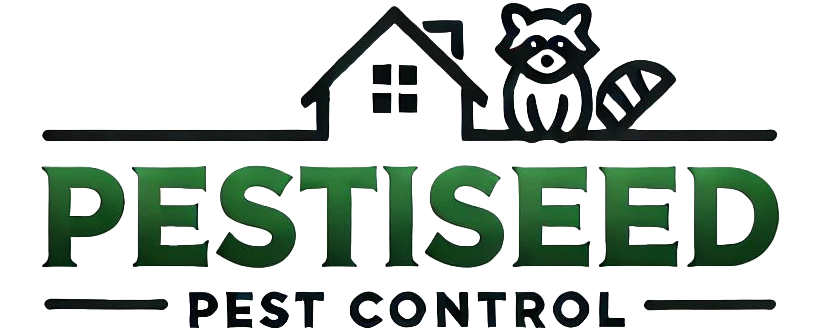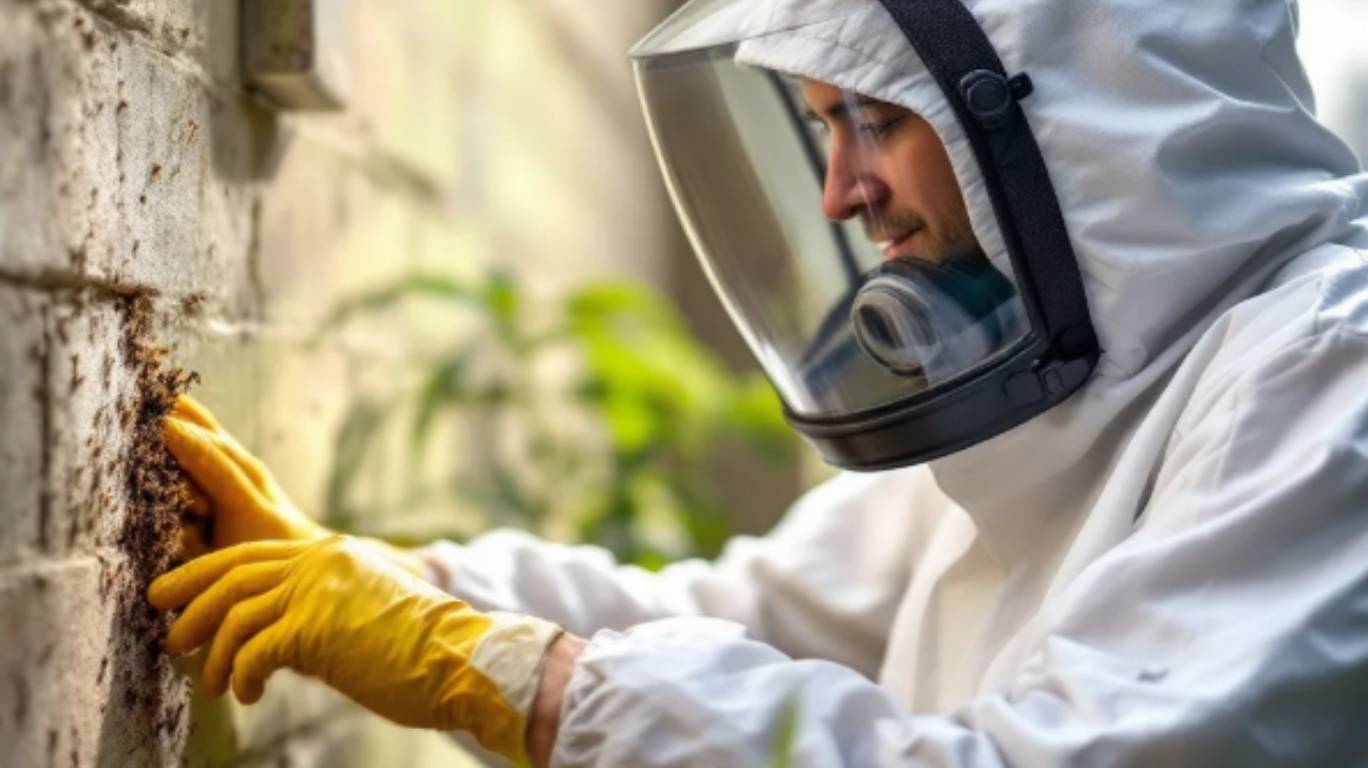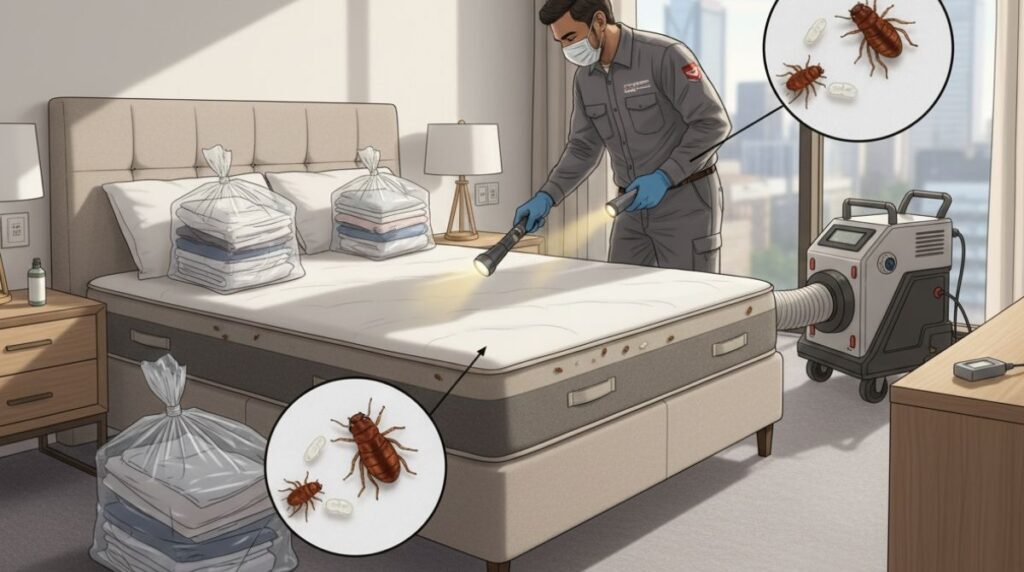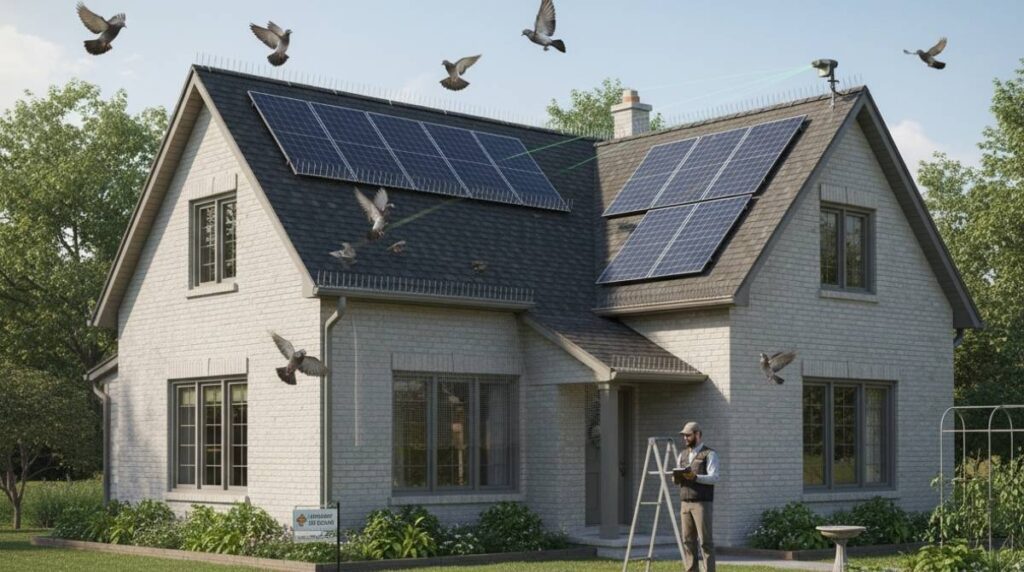Wasps buzzing around your Toronto home? We get it nobody wants angry insects near their family. Wasp nest removal Toronto is what we do best, and we’ve been doing it for over 5+ years. Our licensed experts know exactly how to handle paper wasps, yellow jackets, and bald faced hornets safely. Our team provides fast service with safe solutions that protect your kids and pets. We’re a local trusted company that neighbours recommend to neighbours. Our 24/7 service means you can call us anytime, day or night.
Different wasp species need different removal methods, and that’s where experience matters.We check your whole property carefully. We find every nest. This includes the sneaky ones hiding in your attic or walls. Our team wears top quality protective gear. Everyone stays safe during the removal. We don’t just spray and leave we remove the entire nest and clean up the area.
How to spot a wasp problem
You’ll know wasps are building a home near yours when you see the same flying visitors every single day. They’re not just passing through anymore.Watch for wasps flying in and out of one specific hole. That’s their front door. Check your eaves and soffits first. Those are prime real estate for paper wasps.Bald faced hornets go high up in trees.
Look for paper like nests hanging under your deck or porch roof.They look grey and papery. That’s because they are made of paper. Wasps chew up wood. Then they mix it with their spit. The result is their construction material. You might also spot chewed wood on your fence or shed. That’s not damage from the weather. That’s wasps harvesting building supplies. It was wasps building a city inside their walls.
Why You Must Act Fast
Last August, a Toronto family discovered a huge nest under their deck of hundreds of wasps in days.
Here’s what happens when you wait. Wasp colonies grow fast in summer heat. Late season wasps get cranky and aggressive. They fiercely protect their home.Even without allergies, multiple stings cause serious pain and swelling. Your property takes damage too.
Our Safe Removal Steps
We walk around your home first. Our team checks eaves, vents, and hidden spots. We find every nest before we start work. Expert wasp identification removal matters because different wasps need different plans. Paper wasps act calm most days.
One wrong move can anger hundreds of wasps.For nests you can see, we spray and remove them. Hidden nests inside walls need special dust. The dust spreads through the whole colony.Wasp nest removal requires following proper safety guidelines every single time. The City of Toronto provides official guidance on handling bees, wasps, and hornets that helps residents understand local policies. We follow these Toronto regulations on every job we complete.
Health Canada also offers important pest control tips for wasps that explain the risks clearly. These resources confirm what we see daily in Toronto homes. Professional wasp removal teams know how to apply treatments safely and legally. We stay updated on all Canadian pest control standards. Our methods protect both people and the environment around your property.
Costs and what to expect
We check the nest size first. We look at how high it sits. Cost starts from $99 for basic removal. We see if it hides inside a wall. That pushes the price up a bit. We give you a free quote before we start any work. No surprise bills show up later. Most visits take 15 to 30 minutes to check everything. The actual removal takes 30 to 90 minutes. Hidden nests take longer than open ones. We come back if wasps return within 30 days.
Commercial properties can sign up for seasonal checks. Those plans save money over emergency calls. We’ve pulled nests from weird spots for years. Attics, barbecues, and even old boots get used as homes. Toronto summers bring peak wasp season. Book early and you’ll pay less than waiting until August.
How to keep wasps away for good
Prevention beats removal every time. We’ve seen it work in hundreds of Toronto homes. Seal entry points around your property first.Caulk works great for small cracks. Use expanding foam for bigger holes. Check your vents and chimneys too. Add mesh screens if they’re open.
Keep food and garbage locked down tight. Outdoor trash cans need secure lids. Fallen fruit attracts wasps like crazy. Pick it up daily from your yard. Don’t leave pet food outside either. Wasps scout for protein all summer long. Clean up barbecue spills right away. Sugar and grease bring them running. Plant natural repellents near problem areas. Mint grows like a weed in Toronto. Citronella works well too. Eucalyptus and wormwood send wasps packing. Dense bushes make perfect hidden nest spots. We offer seasonal checks for busy homeowners. Our spring inspections catch trouble early.
Why Choose Our Wasp Nest Removal Service in Toronto
Wasp nest removal isn’t something you want to mess around with. We’ve seen too many Toronto homeowners try the DIY route and end up running for their lives. That’s why our team exists. We handle wasp nest removal so you don’t have to play the hero. We’re fully licensed and insured. Our technicians arrive fast. We use safe methods that actually work. We also cleaned up the mess afterward.
Here’s what makes us different in Toronto. We answer our phones every single time. You won’t get stuck in voicemail jail. We give you honest pricing upfront. No sneaky surprise fees later. Our team knows Ontario wasps inside and out.We’ve removed thousands. Paper wasps under your deck? Done it before breakfast. We bring proper safety gear and professional grade treatments. You stay safe inside while we do the dangerous work.If those wasps come back, so do we for free.
Get Professional Wasp Removal in Toronto Today
Pestiseed know how scary it feels when wasps buzz around your Toronto home.Wasp nest removal needs quick action and the right skills. Our team handles this dangerous job so you stay safe. We’ve removed hundreds of nests across Toronto neighborhoods. Each one taught us something new about these stinging pests.
Professional wasp removal protects your kids and pets from painful stings. That’s when people get hurt. We wear full protective gear and use proven treatments. Most jobs take under two hours from start to finish. You get back to enjoying your yard without fear.
High nests need professionals.Large nests mean hundreds of angry wasps.Call now +1 437-771-8717 & email us info@pestiseed.ca for a free quote and let’s get your home back to normal. Book online in two minutes or speak with our friendly team today. Anyone with allergies needs to stay far away. Our team has 5+ years experience with every wasp type. We use safe solutions that protect your family and pets.
Frequently asked questions
Is it safe to remove a wasp nest myself?
Removing a wasp nest yourself is risky. Small nests might seem manageable.One wrong move triggers a swarm. You need full protective gear. You need the right spray. You need an escape plan. Even then, things can go wrong. We handle nests daily. We know wasp behavior. We use proper equipment. Yellow jackets are especially dangerous. They nest in walls and underground. Disturbing them causes mass attacks. If someone in your home has allergies, don’t risk it.
How much does wasp nest removal cost in Toronto?
Wasp nest removal in Toronto typically costs from $99 for basic removal. Height matters too. Ground level nests are cheaper. Roof nests need ladders and safety gear. Location affects price. Nests inside walls require more work. We might need to open structures. Hornets need extra caution. We always give free quotes.
How long until the wasps are completely gone?
Treatment works fast but varies. Some wasps die within hours. Others take a few days. Full colony elimination needs one to two weeks. It depends on nest size. It depends on location too. Exposed nests clear faster. Hidden nests take longer. Workers keep returning initially. They carry treatment back inside. This eliminates the whole colony. We check progress during follow ups. You’ll notice fewer wasps daily. Activity stops completely soon. Don’t disturb the area meanwhile. Let the treatment do its job.
Do you warranty your wasp removal work?
Yes, we guarantee our work. We retreat to the same spot. No extra charges apply. Our warranty covers the treated location. New nests elsewhere aren’t included. We use proven methods. We use quality products. Returns are rare honestly. When they happen, we fix it fast.
What should I do if someone gets stung?
Stay calm first. Remove the stinger if visible. Wash the area with soap. Apply ice immediately. This reduces swelling and pain. Watch for allergic reactions carefully. Dizziness requires immediate attention. Widespread hives are serious too. For mild stings, pain fades quickly. Redness goes away in days. Keep the person calm. Panic makes things worse. If multiple stings occur, seek medical help. Even without allergies, many stings are dangerous.




